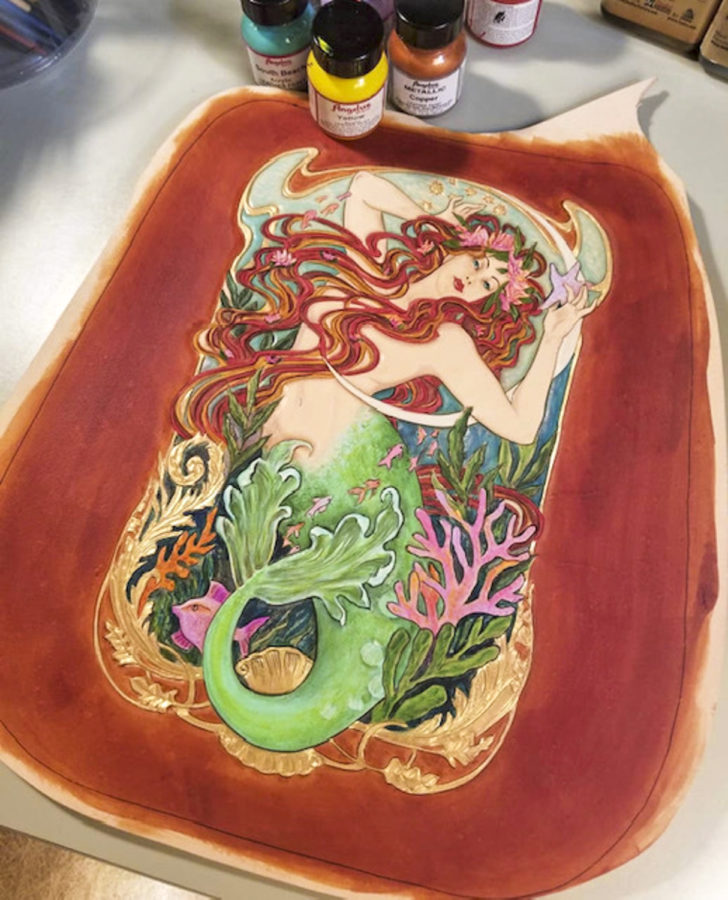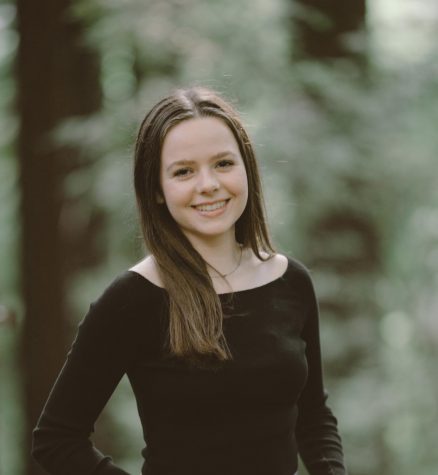Pieces that are passed down generations
Artist creates assortment of handcrafted products from leather, each one uniquely designed
Clover Rinehart loves when she’s given artistic liberty. She feels like she can read people and design their piece based on their personality.
April 7, 2021
Artist Clover Rinehart of Uniontown, Washington creates art that is not only beautiful, but functional.
About 10 years ago, Rinehart started making leather gun holsters specialized for women, by women. She had wanted a holster for herself that was girly and had personality. Unable to find something that suited her, she decided to make one.
“Just from word of mouth, people started seeing what I was making,” Rinehart said. “Then next thing I knew, I was making leather holsters on the side.”
By taking into consideration women’s bodies, the holsters could be worn more comfortably. Rinehart said she wants people to see not just her art but the ergonomics of what she is making in combination with her art.
“Being recognized for that was great, not just that I was putting out something beautiful but something that people used,” Rinehart said. “That, to me, is what’s most important.”
Rinehart has always been artistic and finds that sculpting the leather is the perfect form for her. She loves when people give her artistic liberty, and she can go with what feels natural. Every piece starts with an idea, she said.
“I try to find out about their personality, what they’re looking for and what part of them they’re looking to identify in this piece, no matter what I’m creating,” Rinehart said.
She might do a rough sketch of her idea, but truthfully, she likes to get straight to the leather. Starting with one giant piece of tanned hide, she cuts it into the proper shape before transferring her design.
Once the design is on, she cuts it out with a swivel knife and uses tools to shape the hide, giving it dimension and depth. Once the design is finished, she moves on to her favorite part: applying the color. The leather is painted by hand, bringing the piece to life.
From there, she goes through a process of sealing and protecting her art. Rinehart wants to make sure the piece lasts a lifetime and is able to be passed down through the generations. She sid she hopes to create heirloom pieces.
She is also assisted in the studio by her husband, Karl. She describes her husband as her “support team member.” Although this did not start out as something he was interested in, he does a lot of the sewing and lacing for the pieces. Rinehart said there is a lot more work that goes into creating these pieces than the art alone.
In 2018, Rinehart and her husband joined Artisans at the Dahmen Barn. There, they have a leather shop located next to the main barn in what is known as the milk house, named after its previous use. Rinehart said she is inspired by the view outside while she crafts her leather products. The pair creates a wide variety of pieces including jewelry, purses, belts and more.
“[The barn] is a place different from anywhere else, where you can go and actually watch artists work,” Rinehart said. “You can come in on a day when I’m in my shop and see what I’m making. You can ask questions.”
She hopes that those who see her at work can learn more about leather and maybe start doing leather work as their own hobby. It really is an art that has started dwindling, she said. People would create these phenomenal things because they were needed, but as time progressed, artists stopped creating them because they could be mass produced.
“Now we’re starting to see the importance of having those skills,” Rinehart said. “I think it’s great if we can pass that on, and get all generations interested.”
You do not have to be a great artist to make something great. Being able to put some fun into a practical thing is really something, Rinehart said.
Rinehart’s work can be found at Rinehart Leather and at the Dahmen Barn.









